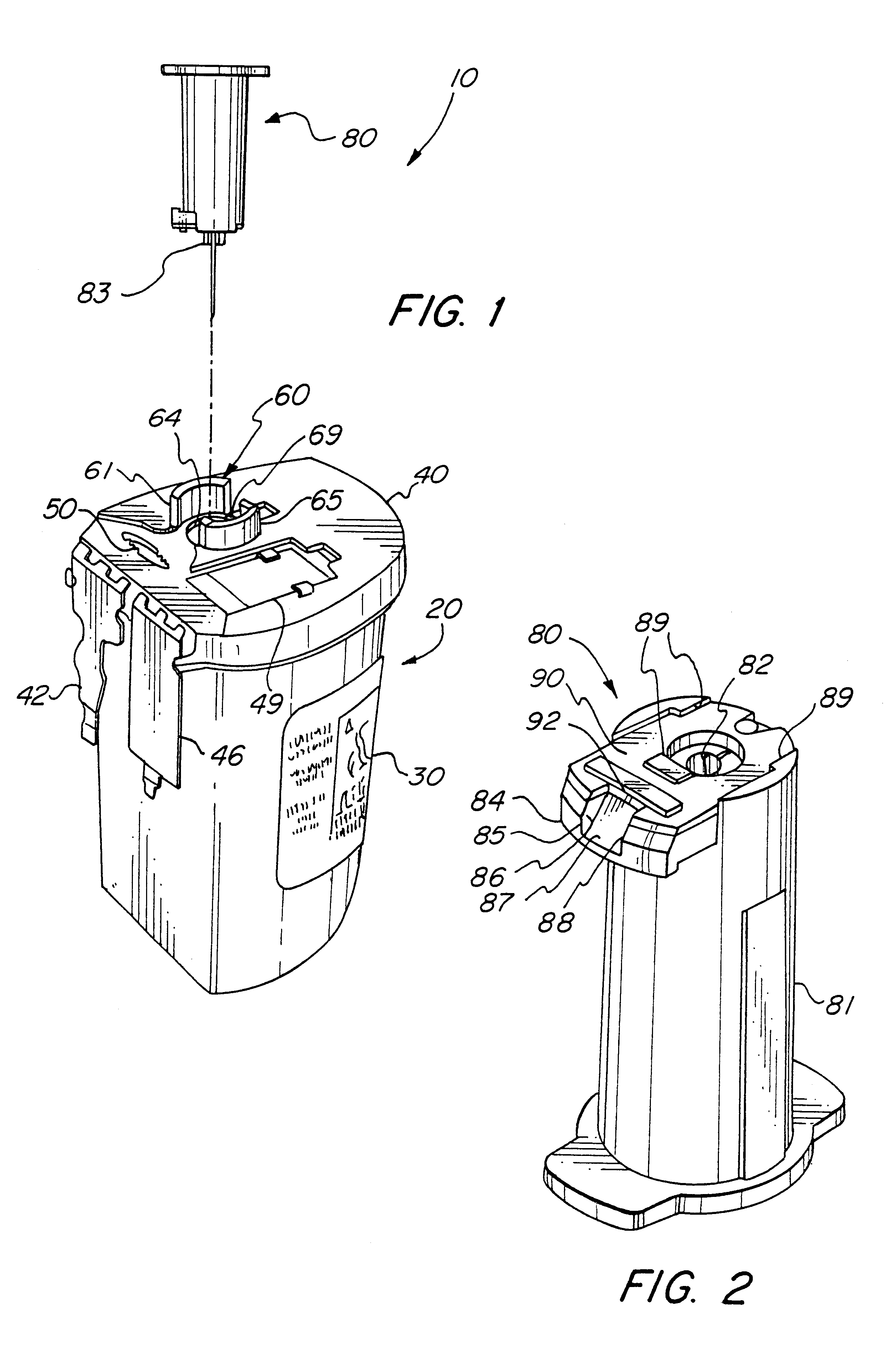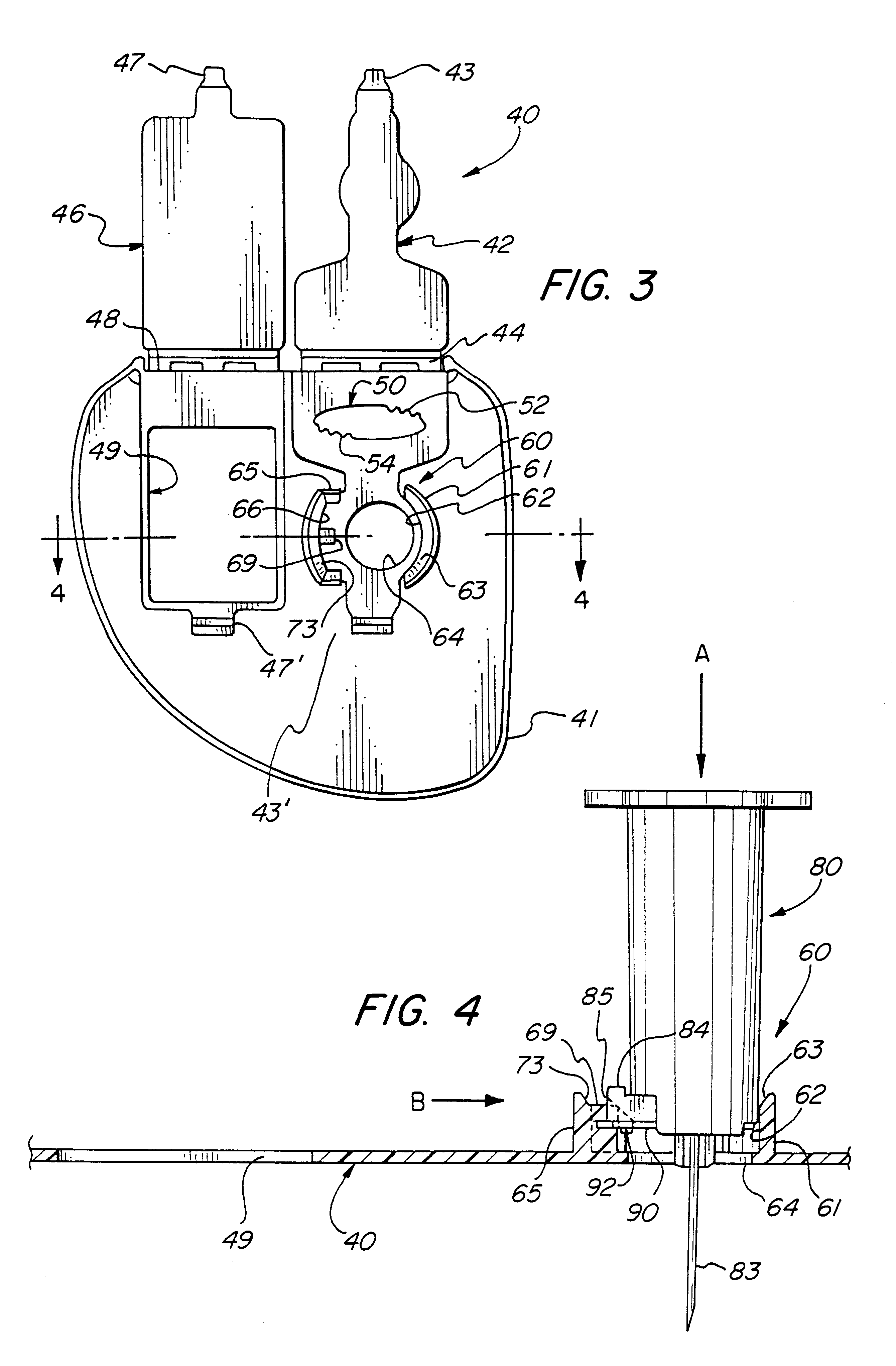System for disposal of contaminated medical products
a technology for contaminated medical products and disposal systems, applied in the field of safe disposal of medical waste, can solve the problems of increased risk of inadvertent contact between health care workers and patients' bodily fluids, use of such devices, and difficulty in telling when the hub has been fully unwound from the holder
- Summary
- Abstract
- Description
- Claims
- Application Information
AI Technical Summary
Benefits of technology
Problems solved by technology
Method used
Image
Examples
first embodiment
Referring to the drawings, and particularly FIG. 1, a sharps disposal system, indicated generally at 10, includes a holder 80 and a sharps disposal receptacle 20. Although not a part of system 10, an externally threaded hub 83, having a needle affixed thereto, is shown detachably mounted to needle holder 80. Sharps receptacle 20 includes a generally hollow base 30 for receiving contaminated sharps. Base 30 is a unitary structure and is provided with a cover 40. Each of base 30 and cover 40 have been individually injection molded to an appropriate thickness using a puncture resistant and leak-proof material such as polypropylene. Base 30, in a preferred embodiment, has a medical waste receiving capacity of approximately one quart. Referring jointly to FIGS. 1, 3 and 4, cover 40 includes a first lid 42, a second lid 46, an unwinder aperture 50, an oversized aperture 49, and an auto-release structure which has been indicated generally at 60. Auto-release structure 60, in accordance wit...
second embodiment
The auto-release structure in accordance with a second embodiment may be seen from FIGS. 6 and 7. This alternative auto-release structure, indicated generally at 60', includes three protruding posts 66, 67, 68 extending substantially perpendicularly from cover 40 and positioned in a circular, evenly spaced relation to needle passage aperture 64. The height of posts 66-68 is sufficient to establish an operative relationship with the holder activation mechanism. As illustrated in FIG. 6, holder 80 has been positioned relative to auto-release structure 60' such that, upon downward movement of holder 80, two posts 66, 67 will guide and orient the holder 80 so that the needle affixed to hub 83 will extend through aperture 64. The third post 68 will engage the needle release mechanism. Three possible orientations of holder 80 onto posts 66, 67, 68 will result in actuation of the release mechanism.
An enlarged perspective view of holder 80 is shown in FIG. 2. As illustrated therein, holder ...
PUM
 Login to View More
Login to View More Abstract
Description
Claims
Application Information
 Login to View More
Login to View More - R&D
- Intellectual Property
- Life Sciences
- Materials
- Tech Scout
- Unparalleled Data Quality
- Higher Quality Content
- 60% Fewer Hallucinations
Browse by: Latest US Patents, China's latest patents, Technical Efficacy Thesaurus, Application Domain, Technology Topic, Popular Technical Reports.
© 2025 PatSnap. All rights reserved.Legal|Privacy policy|Modern Slavery Act Transparency Statement|Sitemap|About US| Contact US: help@patsnap.com



